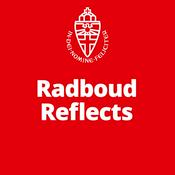155 afleveringen

HPR4535: Living the Tux Life Episode 4 - Various software I have been using
19-12-2025
This show has been flagged as Clean by the host. Show Notes System Monitoring & Metrics Prometheus Open-source monitoring and alerting toolkit for collecting and storing metrics. Documentation : https://prometheus.io/docs/prometheus/latest/installation/ Prometheus Node Exporter Hardware and OS metrics exporter for Prometheus. Guide : https://prometheus.io/docs/guides/node-exporter/ Grafana Open-source analytics and visualization platform for monitoring metrics. Docker Installation : https://grafana.com/docs/grafana/latest/setup-grafana/installation/docker/ Featured Grafana Dashboards Power Information Dashboard : https://grafana.com/grafana/dashboards/12542-power-information/ Node Exporter Full : https://grafana.com/grafana/dashboards/1860-node-exporter-full/ Power Management & Battery Tools TLP Advanced power management tool for Linux that optimizes battery life. Installation Guide : https://linrunner.de/tlp/installation/index.html Battery Uptime Timer Script Custom script for monitoring battery usage and uptime. GitHub Repository : https://github.com/mralc/Battery-uptime-timer Setting Battery Charge Threshold Limit battery charge to extend battery lifespan: echo 90 | sudo tee /sys/class/power_supply/BAT0/charge_stop_threshold Note: Adjust the value (90%) and BAT0 according to your system. Caffeine Prevents your system from going to sleep or activating the screensaver. Project Page : https://launchpad.net/caffeine Backup & File Sharing LocalSend Open-source cross-platform alternative to AirDrop for sharing files locally. Website : https://localsend.org/ Déjà Dup Simple backup tool for GNOME desktop environment. GNOME Apps : https://apps.gnome.org/en-GB/DejaDup/ FOX Clone System backup and cloning tool for Linux. SourceForge : https://sourceforge.net/projects/foxclone/ Terminal Utilities Tmux Terminal multiplexer that allows multiple terminal sessions within a single window. GitHub Wiki : https://github.com/tmux/tmux/wiki Provide feedback on this episode.

HPR4534: Reviving My Kawai K4 Synthesizer
18-12-2025
This show has been flagged as Clean by the host. Links Kawai K4: https://en.wikipedia.org/wiki/Kawai_K4 Kawai K4 Battery Replacement (Japanese): https://www.youtube.com/watch?v=ux3y2ClgP1I Neal Beard and his Machines - Kawai Battery Replacement: https://nealbeardahm.blogspot.com/2012/10/kawai-battery-replacement.html Kawai K4r: Rack-mount module version of the K4 Kawai Downloads Page: https://kawaius.com/downloads/ Standard MIDI Files (SMF): https://midi.org/standard-midi-files MIDI System Exclusive (SysEx) Messages Explained: https://blog.landr.com/midi-sysex/ amidi(1): https://linux.die.net/man/1/amidi Syntaur Keyboard Parts & Accessories: https://syntaur.com/ Provide feedback on this episode.

HPR4533: Nuclear Reactor Technology - Ep 2 Nuclear Fuel
17-12-2025
This show has been flagged as Clean by the host. 01 Introduction This episode is the second in an 8 part series on nuclear reactor technology. This episode will cover types of nuclear fuel, recycling of nuclear fuel, uranium and thorium resources, and medical isotopes. 03 Types of Nuclear Fuel 03 Natural Uranium 04 Enriched Uranium 05 Mixed Oxide Fuel, or MOX 06 Thorium Fuel 08 Plutonium in Uranium Cycle Reactors 09 Depleted Uranium 10 Oxide or Ceramic versus Metallic Fuel 12 Recycling Spent Fuel 13 Once Through Fuel Cycles 14 Reprocessing Spent Uranium Fuel into Mixed Oxide or MOX Fuel 16 Reprocessing and Thorium Fuel 17 Direct Reuse of Spent Light Water Fuel in Heavy Water Moderated Reactors 18 DUPIC - Direct Use of Used PWR Fuel in CANDU 20 RepU - Reprocessed Uranium Fuel in CANDU 21 Uranium and Thorium Resources 21 Uranium Mining 22 Uranium in Sea Water 23 Thorium 24 Medical Isotopes 25 Examples of Common Medical Isotopes 26 How Medical Isotopes are Made 27 Producing Isotopes in Research Reactors 29 Producing Isotopes in Power Reactors 31 Summary The basis of nuclear fission is nuclear fuel. There are three main types of nuclear fuel in commercial use today. These are natural uranium, enriched uranium, and mixed oxide or MOX uranium-plutonium mixtures. It is possible to use thorium in a sort of thorium-plutonium or thorium-uranium MOX fuel, but this not currently economically viable at this time when uranium is so cheap and abundant. Spent fuel can be recycled and used in a reactor again. Medical isotopes are an important byproduct of the nuclear industry, and a large share of the world's population has benefited from this at one time or another. 32 Conclusion In the next episode I will describe the basic features and characteristics of reactors together with descriptions of the most widely used commercial reactor types. This concludes the second episode of an 8 part series on nuclear reactor technology. Provide feedback on this episode.

HPR4532: Cheap Yellow Display Project Part 5: Graphical User Interface
16-12-2025
This show has been flagged as Clean by the host. Hello, again. This is Trey. Welcome to part 5 in my Cheap Yellow Display (CYD) Project series. If you are still listening to me ramble about this project, thank you. If you wish to catch up on earlier episodes, you can find them on my HPR profile page https://www.hackerpublicradio.org/correspondents/0394.html To review, My project is to build a portable morse code "Keyer memory" which can be connected to any of my HF transceiver radios by simply plugging it in to the code key input port. Then I could transmit stored messages by simply touching their specific icon on the touch screen. I also want to be able to program each macro individually from the graphical user interface (GUI). To do this, I need to learn how to build a GUI. Most of the CYD resources I have been referencing recommend using Squareline Studio for GUI development on the CYD. Sadly, Squareline Studio is not open source. If any of you have experience with a good, open source alternative to Squareline Studio, please record a show to help the rest of us. Squareline does have a free trial and a free single user / single computer license, which I am using for this project. It will run on Windows, Linux, and Mac. After watching several videos about using the CYD with Squareline, I started to outline the functionality I needed. Squareline provides a wide range of pre-configured boards and interfaces to choose from, in addition to widgets and controls which you can drag onto your screens, and it will automatically generate the supporting code in the background. The initial page needs to have the macro buttons, with labels for the message they will send when pressed. There also needs to be navigation buttons to move from one page to others. Another important page will be the configuration page, where the user can store the contents of each macro and set the speed at which code will be sent. I would like to have a keyboard page where the user can type a custom message and send it. I made a few GUI sketches on post-it-notes, then I installed Squareline Studio on my Ubuntu laptop to start designing. There is a bit of a learning curve. Even with guide videos, I found the user experience to be... challenging. Their own GUI leaves much to be desired. It was not designed to run on the laptop's screen size/resolution. I had to switch to a much higher resolution monitor and rearrange frames within the app itself in order to see many of the controls. Button size adjustments, alignments, and label text did not work quite as expected. Getting things sized and aligned properly took quite a bit of fiddling. The text displayed on a button is a separate object from the button itself, so I have had to put some thought into object naming so that I can write code which will change button labels dynamically. I am including some screenshots from Squareline for the interface I designed. One great feature is that you can define actions and conditions for objects in your project. For example, there are buttons on the left which will navigate to specific screens. I defined actions within Squareline, such that when the specific navigation button is pressed, it will change the button appearance to look like it has been pressed and will then scroll left or right to a specified screen. Actions were also valuable for the Speed (WPM) slider on the Config screen. When this slider is moved left and right, the GUI will change the actual number for WPM to the right of the slider. Next, there is a simulator function which can be used to test how well the GUI works. It took some trial and error, but I was able to build and successfully test, navigational actions and the WPM slider. As I was working on building the afore mentioned WPM slider, and thinking about the default words per minute of Morse to use, my ADHD interrupted me (As usual). I decided to change the default speed that I use for the Arduino Nano based Morse code practice keyer which I keep on my desk. You can learn more about this keyer in episode 3 of this series. And we will also discuss Morse code speed in a future episode in this series. The original code (As found on https://github.com/jmharvey1/ArduinoCPO ) specified 12 words per minute (WPM) as the default speed, with buttons to increase or decrease this. However, I am practicing at 20 WPM. Every time I turn on the practice set, I need to turn up the speed and guess when I am close to 20. I went ahead and opened the PracticeOscilator project in Arduino IDE and updated the wpm variable to a value of 20. No, you will not see this change reflected in my own GitHub repo because: A) I wanted to test it locally first B) 20 WPM may be a little fast for a default C) I do not use git the way that it is meant to be used, or the way I SHOULD be using it, with pull requests and all. Bad Trey. D) I was distracted ANYWAY, the reason I bring this up is that it is the first time I have used the Arduino IDE to program a board with this system since I upgraded from Ubunto 20.04 to Ubuntu 22.04. Try as I might, I was not able to get the Arduino Nano's USB port to be recognized in Linux so that I could upload the updated keyer code. I spent several days troubleshooting, using other Arduino devices, different USB ports, and different cables, all to no avail. If anyone has any recommendations, I am open to suggestions. So, I dug out my son's old Windows 10 PC and started again. I had to install the Arduino IDE, load all the necessary libraries, and my code from Github (Which I had to manually change once again, because I don't fully get git). Finally I was able to update the Arduino Nano with its new code, and it works perfectly. But this revealed the same problem for the CYD. I also could not get it to connect over USB to my Ubuntu system. Time to migrate the entire project to Windows. My next step was to install Squareline Studio on Windows. Here, I ran into another snag, as my trial license was only for one system, so I had to uninstall Squareline from Linux before I could activate the license on Windows. Did I mention that I would love to find an open source, free software product to use instead? If you know of one, please ping me or post a comment. I wasted more time trying to get the GUI project I had written on the Linux machine imported into Squareline on Windows, all the while thinking of improvements I could make if I started again from scratch. It would not load, and would not load. In the end, I started all over again. After much blood sweat and tears, my GUI code was working again, and this time in Windows. I was able to run it in the simulation mode and move from page to page successfully and also use the WPM slider. I exported the UI from Squareline, and I loaded the code it generated into a new project within Arduino IE. Now was the moment of truth. I followed instructions found on the Pang YouTube channel video [ESP32 + LVGL] Configuration input device rotary encoder ( https://www.youtube.com/watch?v=aGM6gu9OpbA ). I connected the CYD and uploaded the code. SUCCESS!! You can see my "Send" screen loaded perfectly! Now to try other screens. Wait. Drat. It does not seem like my navigation buttons work. Actually, it does not appear that the touch screen is responding at all. I spent the next several days trying to figure out what went wrong. I checked and double checked interrupt and configuration settings (Such as those described in another of Pang's videos, [CYD + LVGL] Configuration Cheap Yellow Display | Easy Guide ( https://www.youtube.com/watch?v=qmR-mjJVumU ). Nothing worked. I came to realize that I bit off more than I could chew, and I should NOT have started with such an ambitious project. Instead I should have started with a simple equivalence of "Hello World", where I could build and test simple functionality to make sure I knew exactly what I was doing, then expand on it. Lessons learned, and a good stopping point for this episode. I am open to your feedback on what you would recommend, what I should do differently, etc. You can post simple feedback as a comment or send me an email using the address in my HPR profile. As usual, if your feedback is more than a sentence or two, you might want to record it as an episode so that other listeners can benefit from it as well. Time for an espresso. Maybe I will make it a double. Or even a triple! Provide feedback on this episode.

HPR4531: HPR Beer Garden 6 - Imperial Stouts
15-12-2025
This show has been flagged as Clean by the host. Kevie and Dave continue their look at winter beers with the a look at Imperial Stouts. In this episode Kevie tries Knight of Ren by Yorkshire based microbrewery Tartarus and Dave samples Toffee Nut Latte Imperial Stout by Edinburgh based Vault City . Connect with the guys on Untappd: Dave Kevie Provide feedback on this episode.
Meer Onderwijs podcasts
Trending Onderwijs -podcasts
Over Hacker Public Radio
Luister naar Hacker Public Radio, The Mel Robbins Podcast en vele andere podcasts van over de hele wereld met de radio.net-app
Ontvang de gratis radio.net app
- Zenders en podcasts om te bookmarken
- Streamen via Wi-Fi of Bluetooth
- Ondersteunt Carplay & Android Auto
- Veel andere app-functies
Ontvang de gratis radio.net app
- Zenders en podcasts om te bookmarken
- Streamen via Wi-Fi of Bluetooth
- Ondersteunt Carplay & Android Auto
- Veel andere app-functies

Hacker Public Radio
download de app,
luisteren.

































